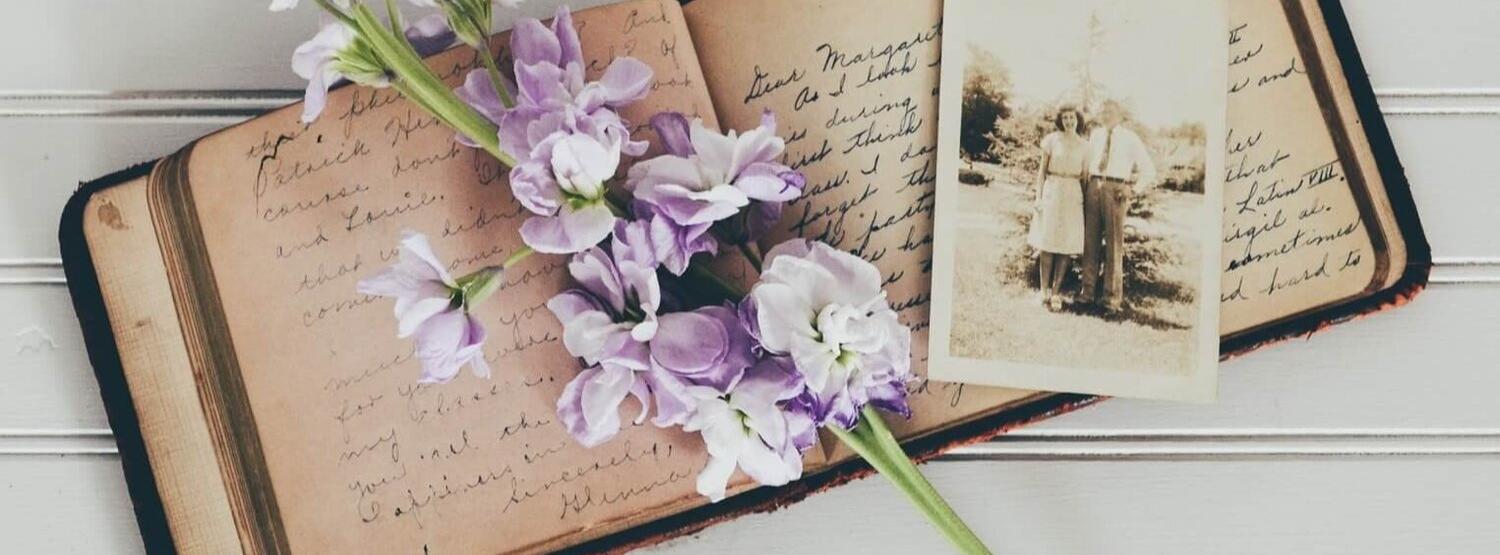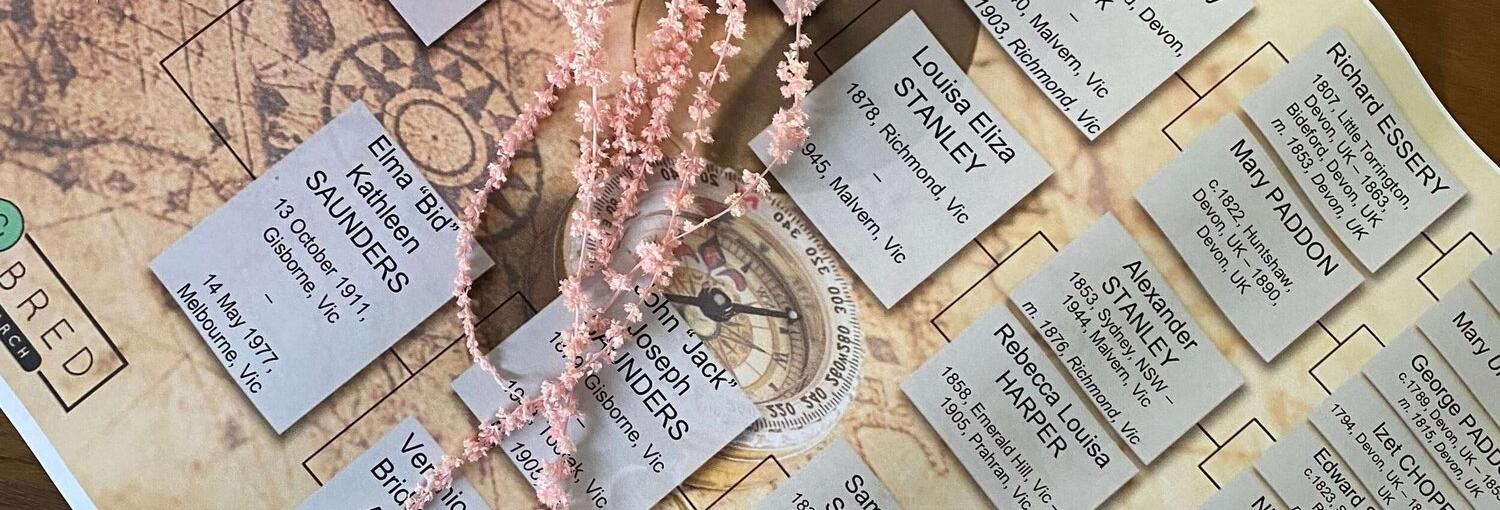Have you ever wanted to know how to start your family tree on your own? The world of history, research and genealogy can be an overwhelming one, but we are here to give you some tips and tricks about working from the roots up (see what we did there?) and beginning your family tree all on your own.
START WITH WHAT YOU KNOW
With absolutely anything, we all have to start somewhere. Whether that is learning to drive, learning to make a sponge cake (still haven’t quite mastered that one), starting a new career, or indeed beginning your family history journey. The same goes for research into your family tree. So, start with what you know and who you know. Write down the names and dates of your immediate family members – parents, grandparents, great grandparents and family members.
Do you know when they were born and/or died? Do you know when and where they were married? Did they even marry? Or did they marry more than once? Make a note of any dates that are important. Maybe you’re not completely sure on dates. That’s fine. Perhaps you also know that your Mum was born in the 1950s and your grandmother was in her 20s when she had her. This gives you a timeframe to work with. Maybe you know that your grandfather served in the Second World War and he and your grandmother married when he returned home. This gives you a window of time and a decade that this event would have taken place.
Dates are great, but so are places. Write down any places that you know your ancestors may have lived. Did they live in the same town their whole lives, or did they move around? Did scarce or transient work mean that they were never in one town for long? Or were the connected with a Church and worshipped there for their entire lives? Can you draw a timeline of their life? This is a great way to get started in filling in the gaps to your research.
These little snippets give you a foundation to work with and expand upon.

Start by writing down what you already know
Are there naming conventions that you can identify in your family? In Scotland for example, the first son was usually named after the father’s father – their paternal grandfather. In Ireland the first daughter was commonly named after her mother’s mother – her maternal grandmother. Well, usually. Maybe your family was unconventional and named their children however they saw fit. You may also get hints and clue with ancestor’s middle names. Possibly, they were given their mother’s maiden name as their middle name. Can you find a name theme running down the trees branches?
Maybe an ancestor was always known by a nickname. Can you determine what their birth name was based on that nickname? This might help you to trace back further. For instance, most people might know that Bill is a nickname for William, but did you know that the name Polly was often a nickname for someone with the name Mary or Dorothy; or that Peggy is a nickname for women called Margaret.
TALK TO YOUR FAMILY
So, you have jotted down all of the things you know about your family history, but you’re still a bit stuck on some of the details and you can’t seem to be able to get further back. One of the best and most valuable assets you will have is your own living family. Talk to them! Sit down with family members and write down what they know. It might not be exact times, dates and full names, but it could be a missing piece of the puzzle, or the hint that will allow you to find what you are looking for. This is such a rich source of information when it comes to researching. It is almost guaranteed that someone will know some little tiny piece of information that could open up a whole new world of research possibilities and help you to continue with your tree.
No information is irrelevant. Even if you are not completely confident about something – a fact, name or date – there is usually some element of truth in there that you can work with. And you never know what they have in their possession. They might hold important records such as family bibles, certificates or the beginnings of their own research. You will never know unless you ask.
Not only is it a great idea to sit down with family members and ask them questions about your family history to be able to progress your family tree, it is a great opportunity to get some of those stories down you may not otherwise have had the chance to. And, you might even get a cuppa and a piece of cake out of it…and you know, some family bonding time.
Oral history is another great source of family history research. But, we won’t chat about that right now, you can check out more about that here.
RECORDS, RECORDS, RECORDS…
Once you have got down what you know, it’s time to start digging deeper. You will need to start exploring records such as births, deaths and marriages. These will vary from state to state and country to country. Some databases may include full names and years, some might only have surnames and initials and the destination where the event took place. Others may have ages at the time the event took place. Keep in mind that spelling may have varied overtime, or there’s an alternative to the way you spell the name now. Sometimes it will just be that it has been transcribed incorrectly. Use fluidity with your spelling (and years/ages) and keep in mind that the spelling can vary over time. Do you think the dates or places in which your ancestor is incorrect? Remember that travel wasn’t as easy as it is today. Events were often registered in the next closest town, or even years after they occurred.
Sometimes these indexes and databases just aren’t enough and you will never find everything you need. They give you the bare minimum to work with that won’t let you progress to the next branch. At times like these you may need to purchase a copy of the certificate. These can be an absolute gold mine of information – but not always. This is something we never know until we see it with our own eyes. But it could be that with that piece of paper you are able to really expand your tree.
![Open+books+[unsplash]](https://www.bornandbredhistoricalresearch.com.au/wp-content/uploads/2021/10/OpenBooksUnsplash-e1635286243228.jpg)
Records, including certificates are a great way to help with your family tree research.
Maybe you use a paid subscription service like Ancestry.com to do some research. These are great resources, but always make sure that you try and locate the original records or database source. And, don’t use someone else Ancestry tree or research as your only source. This can be a great starting point, but have they included the references and records in their tree too? Make sure you back up your information and resources so you know it is legit.
And speaking of references, don’t forget to make a note of all of them. Where did you find your information? Write it down!
AND ANOTHER THING (OR TWO)
When you start your research try to focus on one or two families at a time rather than trying to tackle them all at the same time. These will naturally start to form, but it’s easy to get your branches crossed. Spend the time gathering your information and documenting it in small pieces that can work towards the larger goal of filling your tree.
Patience. It really is a virtue and one that you really need to use when undertaking any type of research, particularly family history research. Website and television make it all look so easy and simple, but really, it takes time. But, hey, it’s all fun – or it should be at least – when you begin to make those discoveries.
Always use a pencil! Trust us, you will do a lot of writing and erasing when you are starting out. Nobody is able to get it completely down on paper the first time. Even us! This will be an ongoing work in progress that is changed, amended and scribbled on over time.
Use the 20-20 rule. Yep, it’s not official or anything, but something that we made up and use almost every day. A generation they say is technically on average, about 25 years. Therefore, if you work with a parent being around 20 (give or take a few years) when they marry/have a child you can likely determine whether you are searching in the right direction. If you do the maths and you find a person was only 8 when they supposedly got married, or a person was 135 when they died, you’re probably barking up the wrong (family) tree.
You need to go backwards before you can go forwards. Write down what you know and work your way back.
And, if you are still stuck, it’s time to hire a professional. Get in touch to see how we can build your family tree and find your people and then present it on one of our fabulous custom-designs.

One of our completed family trees which has more than 60 of your ancestors included

